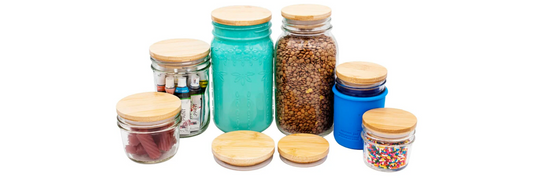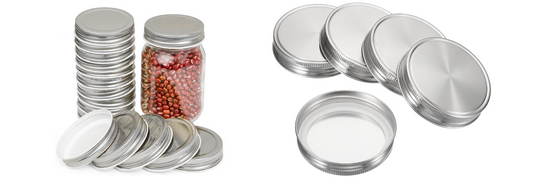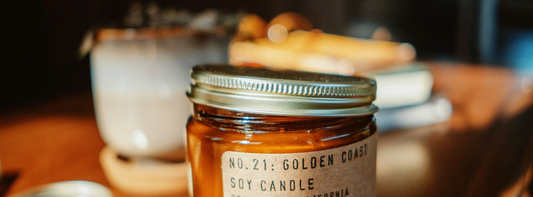Heat sealing is a simple but effective way to join plastic materials together using heat. It's used in many industries to create pouches and bags for packaging products. This method offers many benefits, such as keeping products fresh and safe. In today article, let's explore how heat sealing works and why heat seal bag is so popular.
- Vacuum Sealed Food Shelf-life: How Long Does It Last?
- Vacuum Sealers: How to Extend Food Shelf Life and Preserve Freshness
- Guide to Choose the Right Vacuum Sealer Bags
What is Heat Sealing?
Heat sealing is a process that involves joining two plastic materials together by applying heat and pressure to their edges. This creates a strong, airtight seal that prevents the contents of a package from leaking or being contaminated.
There are different types of heat sealing, including:
- Impulse Sealing: This method uses a heated element that is pressed against the plastic materials for a short period of time. It's suitable for sealing smaller pouches and bags.
- Continuous Sealing: This method uses a continuous sealing bar that moves along the plastic materials, creating a long, uninterrupted seal. It's commonly used for sealing larger bags and rolls of plastic film.
- Rotary Sealing: This method uses a rotating drum that presses the plastic materials against a heated sealing element. It's efficient for high-volume sealing applications.
Several factors can affect the quality of a heat seal. They are:
- Material: The type of plastic used.
- Thickness: How thick the plastic is.
- Width: How wide the sealed area is.
- Speed: How quickly the heat and pressure are applied.
- Equipment: The quality of the sealing machine.
Heat sealing is applied widely in packaging by its various benefits. In the next section, we will go deeper into benefits of heat-sealed packaging, specially heat seal bag.
Benefits of Heat-Sealed Packaging
Heat-sealed packaging and heat seal bag offers several advantages that make it a popular choice for various products. Here are some of the key benefits:
Safety and Freshness
- Protects against contamination: The airtight seal prevents bacteria, moisture, and other harmful elements from entering the package.
- Maintains product quality: By creating a barrier between the product and the environment, heat-sealed packaging helps to preserve freshness and extend shelf life. This is especially important for perishable goods like food and pharmaceuticals.
Appearance and Cost-Effectiveness
- Professional and attractive packaging: Heat-sealed pouches and bags can be customized with various colors, designs, and finishes to create a visually appealing and professional look.
- Economical packaging solution: Heat sealing is generally a cost-effective method. It requires minimal labor and materials, making it a practical choice for many businesses.
Durability and Sustainability
- Strong and resistant to damage: Heat-sealed packaging is durable and can withstand rough handling during transportation and storage.
- Recyclable options: Many plastic materials used for heat sealing are recyclable, making it an environmentally friendly choice. By choosing recyclable materials and properly disposing of the packaging, you can contribute to a more sustainable future.
By these benefits, there are different types of heat seal bag and pouches. Let’s explore in the next part.

Types of Heat-Sealed Pouches and Bags
Heat-sealed packaging or heat seal bag comes in a wide variety of types, each with its own unique characteristics. They are explained as below
Types of Heat Seal Bag by Material
The material used for heat-sealed pouches and bags can vary depending on the product being packaged and the specific requirements. Common plastic types include:
- Polyethylene (PE): A flexible and durable plastic commonly used for food packaging.
- Polypropylene (PP): A lightweight and moisture-resistant plastic often used for medical and pharmaceutical packaging.
- Nylon: A strong and heat-resistant material used for packaging products that require a high barrier to oxygen and moisture.
Types of Heat Seal Bag by Size and Shape
Heat-sealed pouches and bags can be customized to fit a wide range of products. Common sizes and shapes include:
- Flat pouches: Ideal for packaging dry goods and small items.
- Stand-up pouches: Have a flat bottom and can stand upright, making them ideal for displaying products on shelves.
- Gusseted pouches: Have expandable sides, providing extra volume for bulky items.
- Zipper pouches: Feature a resealable zipper closure for convenience.
- Vacuum-sealed bags: Can be used to remove air from the package, preserving freshness and extending shelf life.
Types of Heat Seal Bag by Features
Heat-sealed pouches and bags can be customized with various features to meet specific needs, such as:
- Zipper closures: Allow for easy opening and closing of the package.
- Tear notches: Pre-cut notches that make it easy to open the package.
- Handles: Convenient for carrying and displaying products.
- Windows: Transparent areas that allow customers to see the product inside.
- Labels: Can be printed directly onto the pouch or attached with adhesive.
Applications of Heat-Sealed Packaging and Heat Seal Bag
Heat-sealed packaging is used in a wide range of industries to protect and preserve products. Here are some common applications:
Food Industry
- Snacks: Chips, crackers, candy, nuts
- Frozen meals: Ready-to-eat meals, desserts
- Beverages: Coffee, tea, juice, sports drinks
- Pet food: Dry and wet food
Pharmaceutical Industry
- Medications: Tablets, capsules, powders
- Supplements: Vitamins, minerals, herbs
- Medical devices: Syringes, bandages, diagnostic kits
Industrial Products
- Hardware: Nuts, bolts, screws, nails
- Chemicals: Powders, liquids, pastes
- Automotive parts: Filters, gaskets, O-rings
Consumer Goods
- Electronics: Batteries, cables, accessories
- Toys: Small parts, games
- Clothing: Accessories, garment bags
- Personal care products: Shampoo, conditioner, lotion
These are just a few examples of the many applications of heat-sealed packaging. The versatility of this packaging method makes it suitable for a wide range of products across various industries.

Considerations for Choosing Heat Seal Bag
When selecting heat-sealed packaging for your products, it's important to consider several factors to ensure that the packaging is suitable and effective.
Product Characteristics
- Size and weight: The size and weight of the product will determine the appropriate size and material of the packaging.
- Shape: The shape of the product will influence the type of pouch or bag needed.
- Compatibility with materials: Ensure that the product is compatible with the plastic material used for the packaging to prevent any reactions or degradation.
Packaging Requirements
- Barrier properties: Depending on the product, you may need packaging with specific barrier properties to protect against oxygen, moisture, or other environmental factors.
- Shelf life: The desired shelf life of the product will influence the type of packaging and any additional features needed to maintain freshness.
- Aesthetic appeal: The packaging should be visually appealing and consistent with your brand image.
Production Process
- Sealing speed: Consider the required sealing speed to ensure that the packaging can be produced efficiently.
- Equipment compatibility: Ensure that the packaging material and sealing method are compatible with your production equipment.
Environmental Factors
- Recyclability: Choose packaging materials that are recyclable to minimize environmental impact.
- Sustainability: Consider using sustainable materials and reducing packaging waste whenever possible.
Conclusion
Heat-sealed packaging or heat seal bag is a great way to protect and preserve products. It's strong, keeps things fresh, and looks good. Many materials used for heat sealing can be recycled, which is good for the environment. As technology improves, we can expect even more innovative and sustainable heat-sealed packaging options in the future. Overall, heat-sealed packaging is a reliable and eco-friendly choice for businesses.









